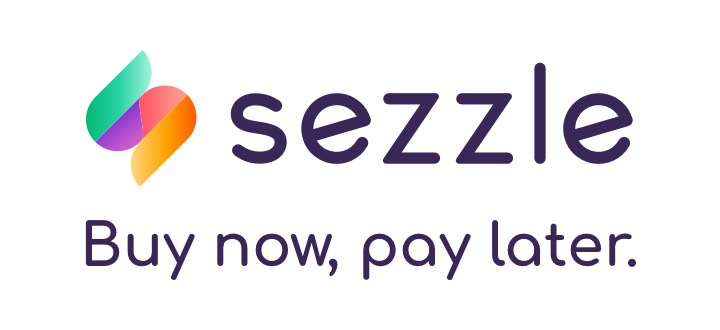Healthcare in Canada vs US: 3 Essential Differences
Category: Medical FAQ

Did you know that the average monthly cost for a single person to buy health insurance is $403 in the US versus $160 in Canada? It’s important to understand what you are getting for the price. There are differences and similarities in healthcare in Canada vs US.
This article will compare these two healthcare systems. Keep reading to learn more.
Healthcare in Canada vs US
Healthcare plans and coverage are different in the US versus Canada. It is important to explore the whole picture before drawing conclusions. Here are some key points for consideration.
Insurance Coverage Options
Canada: Taxpayers pay for Canadian citizens’ and permanent residents’ healthcare. This is a “free” and public healthcare system. Yet, if you are not a resident, you will need to cover some costs on your own.
The public healthcare system, called Medicare, covers most basic medical services. The plans differ from one province and territory to another. All areas cover emergency medical services even if you’re not enrolled in the public system.
Canadians may receive some healthcare benefits through employers. They also have the option to buy gap insurance policies.
Single-payer or universal coverage is not affected by loss or change of job. While people tend to use preventative medicine more, there are fewer long-term care needs in Canada.
United States: In the US, there are many avenues to getting health insurance. The plans vary in the amount of coverage for medical services and prescription drugs. Individuals must choose between low-cost plans with high out-of-pocket expenses or high-cost plans with low deductibles.
Most plans require the participant to pay a set amount, called a deductible. Once you meet the deductible, the covered percentage increases. Options for health care coverage includes:
- Coverage benefits through your employers or your spouse/partner’s employer
- Purchasing directly from a health insurance company or via the Health Insurance Market
- Government programs including Medicare, Medicaid, or the Children’s Health Insurance Program
- Benefits for military personnel through the Veterans Administration or TRICARE
- State Health Insurance Plans (if available)
- Paying for continued temporary coverage after leaving a job under the Consolidated Omnibus Budget Reconciliation Act (COBRA)
- The Affordable Care Act to cover health expenses not covered by an employer
Each type of coverage has eligibility requirements for enrollment. Individual out-of-pocket cost varies among the different plans.
Prescription Medication Coverage
Canada: Coverage for medications varies between provinces and territories due to different cost-sharing mechanisms. There are specific programs for citizens receiving social assistance, seniors, and people under the age of 65. There are also specialty plans targeting diseases such as cancer, palliative care, and infectious diseases.
For example, citizens under the age of 65 may pay low prices in some provinces while others have deductibles ranging from 2% to 35% of their income. Some must also pay coinsurance. In other provinces, there’s only one plan regardless of age.
Several provinces use a sliding scale based on the individual’s income. This offers greater support from the government for those with low incomes.
United States: Medicare Prescription Drug Coverage (Part D) has a gap in their prescription drug coverage. This is called the “donut hole”. When the Medicare maximum drug payment reaches $3,820, they must begin paying for medications.
While in the “donut hole” they pay 25% for brand name drugs and 37% for generic drugs. Once the individual pays $5,100, including their deductible, they pay 5% for the rest of the year.
The donut hole will end in 2020. Medicare Participants will pay 25% for generic drugs until they meet the “catastrophic level” decided by the government.
Private insurance holders pay various deductibles and are sometimes limited on which medications they can take. Benefits vary among different insurance plans.
The Patient Healthcare Experience
Canada: Their universal health-care system is one of the most expensive among developed countries. Yet, there are imbalances between the value of care received and the amount of money spent on healthcare.
For example, there are fewer physicians and hospital beds available. They also have fewer medical technologies including MRIs and CT scanners.
Canada is the only member of the Organisation for Economic Co-operation and Development (OECD) that disallows private financing for medically necessary services. Specialist physicians are also restricted from practicing in both publicly funded universal institutions and in private settings. Canada and the United Kingdom are the only OECD countries that don’t require patients to share the cost of medically necessary treatment.
United States: Most Americans feel secure that when serious injuries or illness occurs, they will have healthcare professionals to take care of them. Medical advances in treatment are being made every day at world-renowned institutions around the country.
Yet, some Americans still struggle to get the treatment and services they need. Access to healthcare is fragmented. This is especially true for lower socioeconomic groups and those with advanced illnesses.
A project was conducted called Health Care in America: The Experience of People with Serious Illness. This survey showed that 6 of 10 people with a serious illness reported at least one problem accessing care. Almost one-third of patients said they had trouble understanding their insurance coverage.
Twenty-three percent reported receiving conflicting recommendations from practitioners. Twenty-nine percent said they had duplicate tests or procedures. This increases the healthcare cost burden.
The ability to directly choose your practitioner varies based on the insurance plan and which plans are accepted by the physicians. Some policies require patients to use a “gatekeeper”.
Summary of Findings of Healthcare in Canada vs US
A study in the Forum for Health Economics & Policy compared healthcare in Canada vs US. They found an increased incidence of chronic health conditions in the US. Yet, Americans had greater access to treatment for their conditions.
More US men and women were screened for common types of cancer. The mortality/incidence ratios of different cancers were higher in Canada.
The effort to deliver “free” healthcare has led to a rationing of resources in Canada. This has led to increased wait times to receive care.
In the US, many individuals do not receive medical care due to costs beyond their means. This study found that health status also correlated with income in Canada. In fact, this report stated that “the health-income gradient is slightly steeper in Canada than in the US.”
So, Which Is the Better Healthcare System Option?
The healthcare in Canada vs US both have pros and cons. Ongoing examination of what works and what needs improvement will lead both countries to more positive patient experiences and outcomes.
If you need prescription medications, PriceProPharmacy.com fills orders in Canada and the US. All medications come from licensed and certified dispensing pharmacies.
Contact us today to ask questions and learn more about our products.



